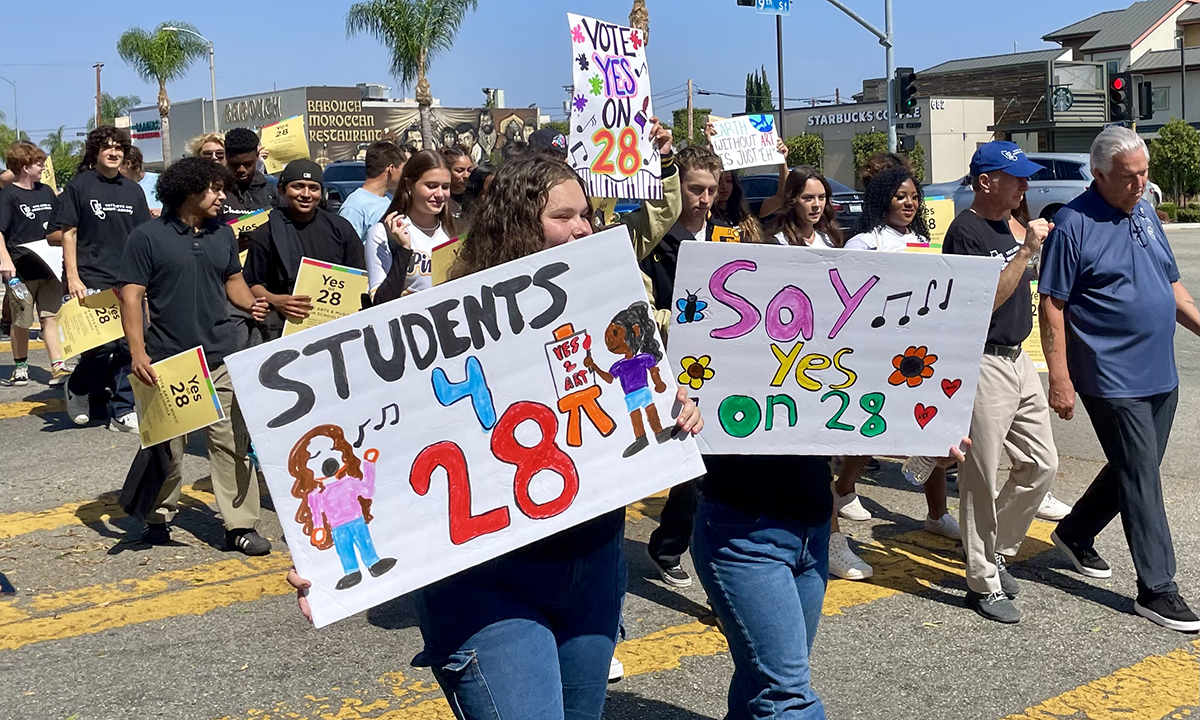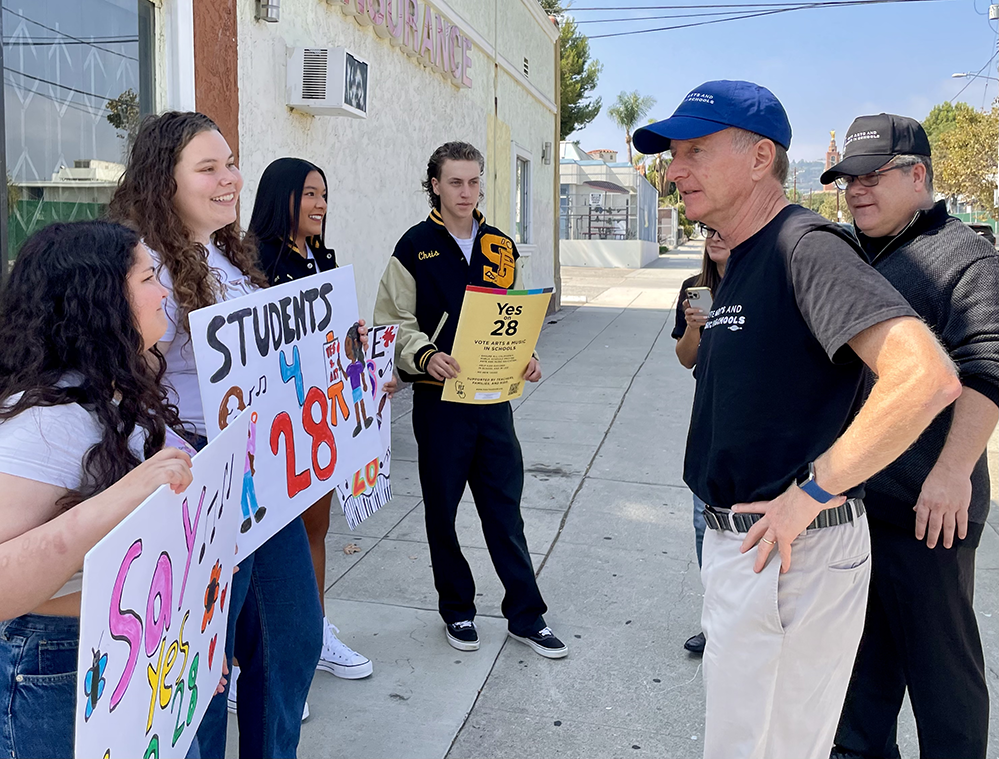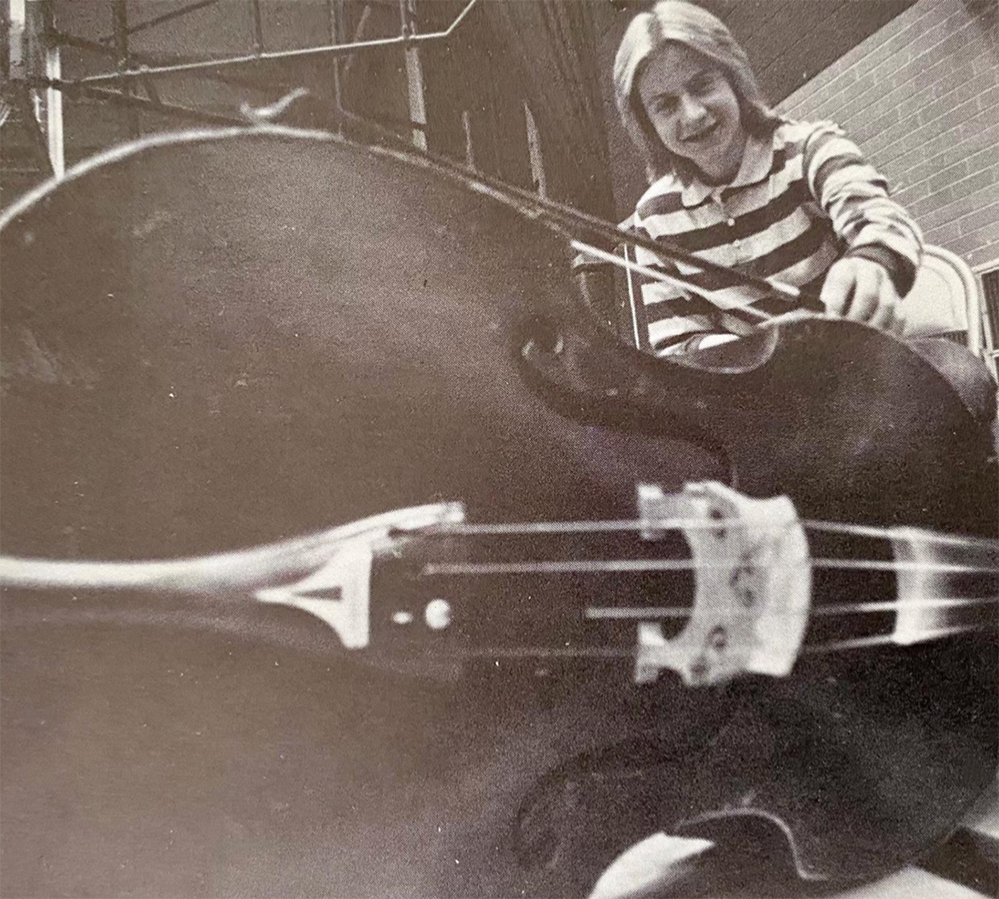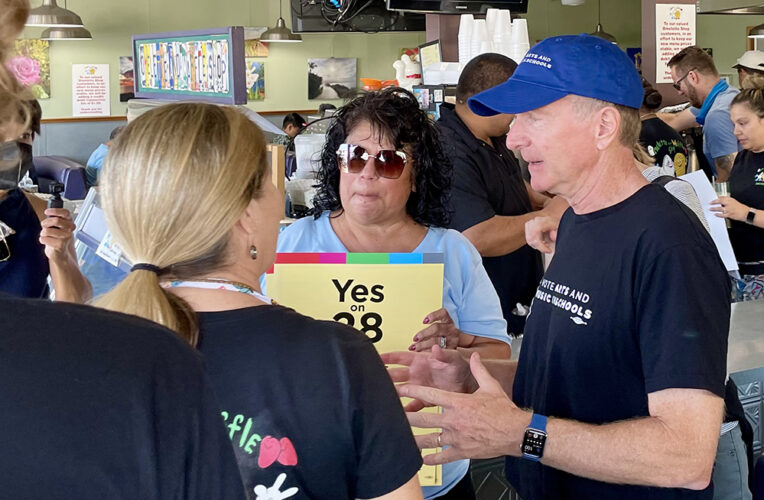8 School Propositions on Midterm Ballots: Arts Education in CA, Early Ed in NM, Free School Meals in CO & More
Other measures include votes to increase taxes in Massachusetts and whether West Virginia lawmakers can veto state board policy

Get stories like this delivered straight to your inbox. Sign up for The 74 Newsletter
Parading down a busy street in San Pedro, a Los Angeles neighborhood, students waved signs over their heads and urged passing cars to support their cause. “Honk for 28!” they yelled. “Say yes on 28.”
The shouting referred to California’s Proposition 28, a ballot initiative that aims to pump at least $800 million into K-12 arts and music programs.
It comes with a pleasing selling point: It won’t increase taxes. That’s one reason no one is raising money to defeat the measure — a relief to former Los Angeles schools chief Austin Beutner, who led the effort to get the question on the ballot and donated over $4 million to the cause.
As superintendent, he and the unions often butted heads. But on that early October day, union members joined him in asking managers of a sandwich shop and a crowded breakfast joint to hang campaign signs in their windows.
“We just want to make sure people know what Prop 28 is,” said Beutner, adding he’s encouraged by the positive reception the measure has received. “It’s been a long time since we’ve had the community of California in support of public education.”
From New Mexico to Massachusetts, voters will decide on several education-related ballot initiatives when they head to the polls Nov. 8. Most propose to raise taxes for additional school funding, but others could decide if all students should get free meals or whether lawmakers can override state board policy.
The California arts measure, however, is decidedly more high profile, attracting support from some big names in the entertainment industry. To promote the initiative, Beutner shared the stage with rappers Dr. Dre and Lil Baby. In San Pedro, “Lord of the Rings” actor Sean Astin pitched in.
“Our members absolutely champion arts and music education in schools. It’s what we’ve built our life and our career on,” said Astin, representing the Screen Actors Guild-American Federation of Television and Radio Artists. “We think every child, every student deserves [to be] exposed to the arts and music in their public school.”

‘The most impact’
Twenty-three states currently provide grant funding for arts education or have a school for the arts, according to the Arts Education Partnership, a project of the Education Commission of the States. But generally, states aren’t required to fund them, said Mary Dell’Erba, the Partnership’s assistant director. Some states fund arts efforts through license plate fees or lottery funding.
Proposition 28 is unique, she said, not just because of the large sums of money it would generate, but the priority it places on arts funding in the state budget.
Called Arts and Music in Schools, the measure would require that 1% above what the state is legally required to spend on education be directed toward the arts. In years when revenues decline, the funding wouldn’t be cut any more than the overall K-12 budget.
Eighty percent of the funds would go toward arts teachers. And while all schools would have access to the funding, 30% would target low-income schools.
To Malissa Shriver, chair of Turnaround Arts: California — a nonprofit that supports school improvement through the arts — that’s huge. When her program began, she said it was hard to find schools that met the organization’s requirement to employ credentialed art teachers.
She gave Beutner credit for “knowing how money bleeds out into administrative costs” and for designing the proposition “in such a way it can have the most impact.” Only 1% can be used for administration and the rest can go toward materials or teacher training.
She argues that along with students’ math and reading achievement, creative expression can help students regroup socially and emotionally after many months of pandemic isolation.
But even if the measure passes, it will face challenges. One is staffing.
“Just because there is a requirement that the funding support educators doesn’t mean there will be educators to hire,” Dell’Erba said.
Some editorial writers have criticized the measure as “ballot box budgeting” and said the state shouldn’t tell local school boards how to spend money.
‘Be who we want to be’
Beutner’s crusade stems partly from his own experience. A shy student in elementary school, he gained confidence after learning to play the cello in fifth grade.

“I could perform in front of thousands of people before I could speak in front of tens of people,” he said. “It all started with that sense of belonging.”
The San Pedro High 12th graders who campaigned with him that day — some dressed in cheerleading uniforms, others holding handmade signs — agreed.
Miki Vasquez, a senior, said art and music “lets us be who we want to be.”

Chris Soto said he’d take a guitar class if one were available. And Isabella Menzel, a first-time campaigner, shouted, “This is the most excited I’ve ever been.”
One student brought “Lord of the Rings” volumes for Astin to sign. After chanting with the students for a few blocks, Astin left early. Currently a graduate student at American University in Washington, studying public administration and policy, he said he had homework to do. “I have an essay due in six hours.”
Other state initiatives
While Proposition 28 might be the ballot measure with the most star power, it’s not the only education initiative to come before voters on Nov. 8. Here’s a rundown of the rest:
Colorado: The Healthy Schools Meals for All program would fully reimburse districts for offering students free breakfast and lunch, regardless of family income. It would also increase pay for school nutrition staff and offer training and equipment to make meals from scratch. To pay for the program, the initiative would cap income tax deductions for those making $300,000 or more. There is no organized opposition to the measure, but one lawmaker who voted against putting it on the ballot said he had a “fundamental problem” with subsidizing meals for students whose parents can afford to pay.
Idaho: An advisory question on the ballot asks voters whether they approve or disapprove of HB 1, a bill lawmakers passed this year that would change the tax rate structure to free up $410 million annually for public schools. The ballot measure describes the additional funding as “the single largest investment in public education in Idaho history.” According to HB 1, the outcome of the vote will guide the legislature on whether the changes become permanent. But one political scientist described the non-binding proposition as a campaign ad for Gov. Brad Little and lawmakers who supported the bill.
Massachusetts: Question 1 would amend the state constitution to tax millionaires an additional 4% above the existing 5% flat-rate income tax. According to supporters, the Fair Share Amendment would raise roughly $2 billion for public schools, higher education, road maintenance and public transportation. They argue additional revenue is needed to address educational inequities that grew because of the pandemic. The Coalition to Stop the Tax Hike Amendment argues the measure is deceptive because it would apply to one-time transactions like selling a house. They also say it would allow lawmakers to create new tax brackets and higher rates that would eventually affect the middle class.
New Mexico: Amendment 1 would set aside roughly $150 million annually from the state’s Permanent School Fund for early-childhood education and about $100 million for teacher compensation and programs serving students at risk of failure. The fund comes from oil and gas revenues and capital investment returns. The measure seeks to increase the distribution of the fund from 5% to 6.25%.
If voters approve it, the measure would need final approval from the U.S. Congress because early-childhood education was not one of the approved uses written into the federal law. There is no organized opposition to the measure, but a Republican lawmaker who voted against placing it on the ballot said withdrawing more from the fund would leave fewer resources for the state’s children.
Voters will also decide Bond Question 3, which would authorize almost $216 million in bonds for capital projects, including those at tribal schools, a child psychiatric center and an Albuquerque preschool that serves deaf children.
Rhode Island: Question 2, placed on the ballot by the state legislature, asks voters to approve $250 million in bonds for school construction and renovation. .
West Virginia: The state legislature would get final say on any rules or policies passed by the Board of Education if voters approve Amendment 4. Republicans in the legislature pushed for the measure, arguing that regulations governing schools should be left to those elected by voters, not an appointed board. But opponents, including former state Superintendent Clayton Burch and Miller Hall, former state board president, argue the proposed amendment would subject education to more partisanship and would lead to inconsistency in learning due to changes in the legislature.
Get stories like these delivered straight to your inbox. Sign up for The 74 Newsletter

;)
